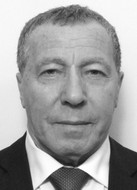Junior weightlifters' age-specific neuro-muscular system performance profiling study
Фотографии:
ˑ:
Dr.Hab., PhD, Professor L.S. Dvorkin1
Dr.Hab., Professor N.I. Dvorkina1
PhD, Associate Professor S V. Fomichenko1
S.I. Popova2
1Kuban State University of Physical Education, Sport and Tourism, Krasnodar
2V.N. Machuga Children and Youth Sports School, Pereyaslovskaya vil., Bryukhovetsy district, Krasnodar region
Presently the research literature on the subject provides little if any trustworthy data on the electrokymographic tests of the junior weightlifters’ age-specific neuro-muscular system performance rates. Objective of the study was to profile the junior weightlifters’ age-specific neuro-muscular system performance rates. Subject to the study were junior (13-14 year-old) weightlifters (n=14) forming a Study Group (SG) versus a Reference Group (n=23, RG) of their non-sporting peers. Tests under the study were designed to obtain wrist dynamometric data for the master/ second hands versus the bioelectric activity of the following muscles: musculus flexor carpi radialis, musculus flexor carpi ulnaris, musculus brachialis and musculus palmaris longus. The groups were requested to apply 1/3 of the maximal strength till refusal i.e. till the last moment when the static tension could still be kept at the required level. The junior athletes were tested with gradual growth of the total bioelectric muscle activity rates in the wrist strength tests versus the their non-sporting peers tested with falling bioelectric muscle activity rates – that may be indicative of the athletes’ nervous mechanism control system operating more efficiently i.e. the muscular performance control by the CNS being better developed versus their non-sporting peers.
Keywords: total bioelectrical muscular activity, static tension of wrist and forearm muscles, master hand, second hand, junior (13-14 year-old) weightlifters.
References
- Gorbaneva E.P. Fiziologicheskie mekhanizmy i kharakteristiki funktsionalnykh vozmozhnostey cheloveka v protsesse adaptatsii k spetsificheskoy myshechnoy deyatelnosti. Dis. dokt. med. Nauk [Physiological mechanisms and characteristics of human functional capabilities during adaptation to specific muscular activity. Doctoral diss. (Med.)]. Volgograd, 2012, 352 p.
- Dvorkin L.S., Akhmetov S.M. Atletizm v sisteme fizicheskogo vospitaniya i sporta (istoriya, teoriya, metodika i tekhnologiya) [Body building in physical education and sport system (history, theory, methodology and technology)]. Krasnodar, 2012, 688 p.
- Drobinskaya A.O. Anatomiya i vozrastnaya fiziologiya. Uchebnik dlya bakalavrov [Anatomy and developmental physiology. Textbook for bachelor students]. Lyubertsy: Yuoright publ., 2016, 527 p.
- Mogendovich M.R., Temkin I.B. Analizatory i vnutrennie organy [Analyzers and internal organs]. Moscow: Vysshaya shkola publ., 1971, 224 p.
- Mogendovich M.R. Reflektornoe vzaimodeystvie lokomotornoy i vistseralnoy sistem [Reflex interaction of locomotor and visceral systems]. Leningrad: Medgiz publ., 1957, 429 p.
- Solodkov A.S., Sologub E.B. Fiziologiya cheloveka. Obschaya. Sportivnaya. Vozrastnaya. Uchebnik [Human physiology. General. Sports. Developmental. Textbook]. Moscow: Sovetskiy sport publ., 2012, 620 p.
- Trembach A.B., Marchenko V.V. Vliyanie vozrastayuschey nagruzki na elektricheskuyu aktivnost dvuglavoy myshtsy plecha u kvalifitsirovannyлh sportsmenov silovykh vidov sporta [Influence of Growing Load on Еlectric Аctivity of Bicеps Muscle of Shoulder in Qualified Athletes of Power Kinds of Sports]. Teoriya i praktika fiz. kultury, 2003, no. 9, pp. 39-41.



 Журнал "THEORY AND PRACTICE
Журнал "THEORY AND PRACTICE